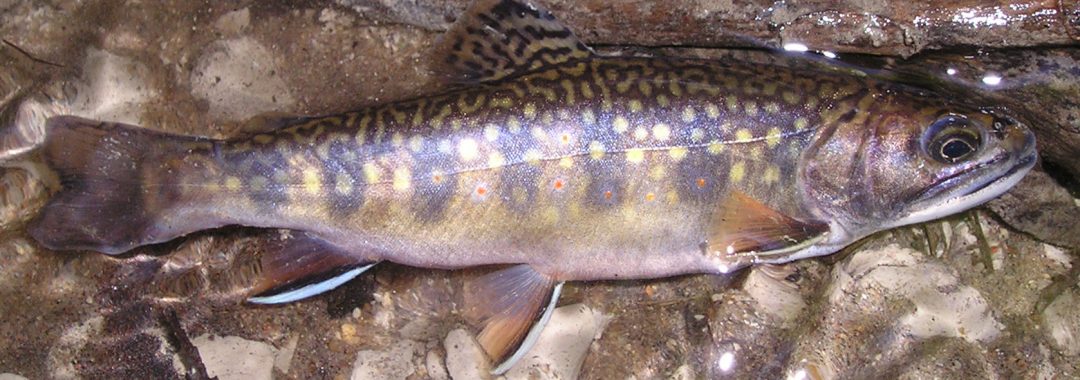Thesis Title:Assessing the effects of non-native salmonids on Bull Trout (Salvelinus confluentus) in Alberta’s Rocky Mountain foothills.
Author: Jacqueline Pallard
Abstract
The rapid decline in global biodiversity threatens the natural resources, food security, health, and livelihoods of current and future generations. Anthropogenic activities, including the introduction of non-native species, habitat fragmentation and alteration, and resource extraction, have exacerbated this decline. One such imperiled species are Bull Trout (Salvelinus confluentus), which have exhibited significant declines throughout their range and are expected to decline by >30% over the next 21 years in Alberta. While their decline is attributed to a myriad of threats, the degree to which non-native fishes contribute to their decline is uncertain. The objective of my thesis was to investigate the effects of Brook Trout (Salvelinus fontinalis) and Brown Trout (Salmo trutta), two non-native salmonids, on the habitat use and dietary niche of Bull Trout. To address the habitat component, I developed a multi-species N-mixture model using in-stream and land use derived characteristics to assess how Brook Trout and Brown Trout affect Bull Trout abundance in relation to habitat factors. I determined that Brook Trout negatively affect Bull Trout abundance when streams are <11°C and lack habitat complexity. Interactions between Brown Trout and Bull Trout are less certain, but larger, lower elevation streams are likely to see reductions in Bull Trout abundance where Brown Trout invasion is present and likely to occur. To address the dietary component, I employed stable isotope analysis to investigate how Brook Trout and Brown Trout interact with the dietary niche of Bull Trout. I determined that Bull Trout in sympatry with both Brook Trout and Brown Trout undergo a niche shift and are displaced from terrestrial-based resources. Furthermore, potential for competitive exclusion exists when resources are low given all species exhibit a high degree of niche overlap (>80%) when in sympatry and the amount of niche overlap does not decrease between allopatry and sympatry. The findings of my thesis suggest that both Brook Trout and Brown Trout interfere with the resource use of Bull Trout, on multiple levels, and provides practical guidelines for limiting future declines.



